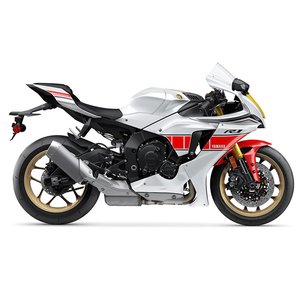Yamaha YZF-R1 (1998-2001): The Genesis of Modern Superbikes
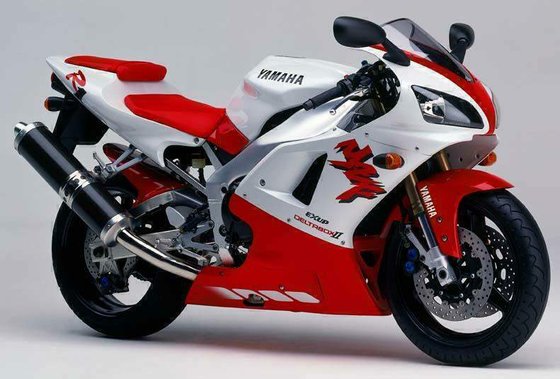
When Yamaha unleashed the YZF-R1 in 1998, it didn’t just release a motorcycle—it redefined the sportbike category. This first-generation R1 shattered expectations with its fusion of raw power, razor-sharp handling, and revolutionary engineering. Over two decades later, the 1998–2001 R1 remains a benchmark for adrenaline-fueled performance. Let’s dive into what makes this machine a legend and why it still captivates riders today.
Design & Styling: Form Meets Function
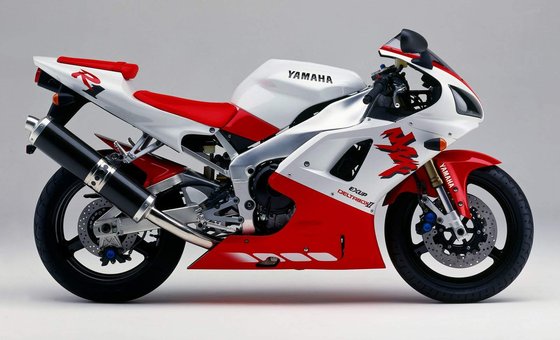
The YZF-R1’s design was a masterclass in aggression and innovation. Its twin-headlamp fairing, angular lines, and minimalist tail section screamed speed even at a standstill. The compact 1395 mm (54.9 in) wheelbase and aluminum Deltabox II frame weren’t just aesthetic choices—they centralized mass for unparalleled agility.
Yamaha’s "stacked gearbox" shortened the engine length, allowing a longer swingarm within a tight chassis. This design trick improved traction and stability without sacrificing flickability. The 41 mm USD forks and monoblock brake calipers hinted at its track-ready DNA, while the 18-liter (4.76 US gal) fuel tank offered just enough range for spirited rides.
Engine Performance: Controlled Fury
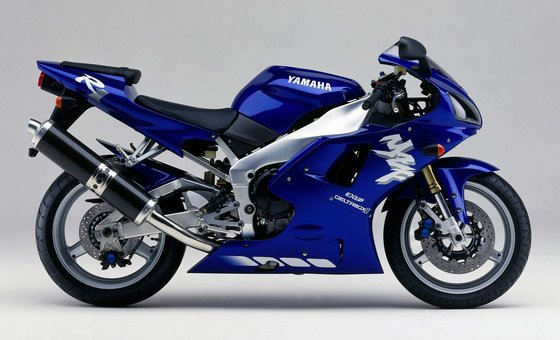
At its heart lay the 998cc inline-four engine, a 20-valve powerhouse producing 150 HP (109.5 kW) at 10,000 RPM and 108 Nm (79.7 lb-ft) of torque at 8,500 RPM. The EXUP valve system smoothed power delivery, making it deceptively rideable despite its ferocity. Testers clocked a 0–100 km/h (0–62 mph) time of 3.1 seconds and a top speed of 277 km/h (172 mph)—numbers that humbled competitors.
The R1’s carbureted engine (4x Mikuni 40mm) delivered throttle response that felt alive, with a linear surge from 4,000 RPM to its 11,750 RPM redline. Riders praised its flexibility: it’d lug at 2,000 RPM in traffic yet scream like a MotoGP machine when unleashed. The 6-speed transmission, revised in 2000 with a taller first gear, became buttery-smooth, addressing earlier clunkiness.
Handling & Ride Experience: A Scalpel on Wheels
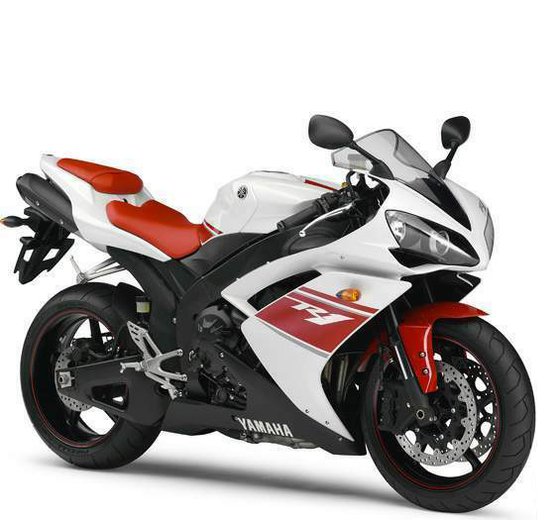
The R1’s chassis was its crowning achievement. Weighing just 177 kg (390 lbs) dry, it felt 50 kg lighter mid-corner. The 24-degree rake and 91 mm (3.6 in) trail struck a balance between quick steering and stability, while the truss-style swingarm kept rear-end feedback precise.
On twisty roads, the R1 carved like a 600cc bike but with the grunt of a liter-class engine. The suspension—41 mm inverted forks and a Monocross rear shock—was firm yet compliant, absorbing bumps without wallowing. Braking was equally stellar, with dual 298 mm front discs and 4-piston calipers offering fade-resistant stopping power. As one tester noted, “It’s a bike that forgives mistakes but rewards genius.”
Competition: Dominating the 2000s Superbike Wars
The late ’90s/early 2000s superbike arena was fierce, but the R1 outclassed rivals through sheer innovation:
-
Honda CBR900RR FireBlade:
The Blade pioneered the lightweight liter-bike concept but lagged in power (123 HP) and chassis rigidity. The R1’s 27 HP advantage and shorter wheelbase made it the sharper tool for aggressive riding. -
Suzuki GSX-R1100:
A torque-heavy brute, the GSX-R1100 felt archaic next to the R1. Its steel frame and 224 kg (494 lbs) weight couldn’t match Yamaha’s agility. -
Kawasaki ZX-9R:
The Ninja’s 147 HP engine and adjustable suspension were impressive, but its conventional layout and longer wheelbase left it playing catch-up in handling.
The R1’s blend of power, weight, and geometry made it the go-to for riders craving track-day precision without sacrificing street usability.
Maintenance: Keeping the Legend Alive
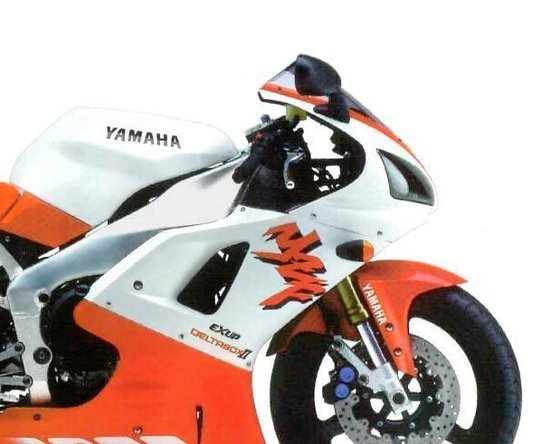
Owning an R1 requires diligence, but MOTOPARTS.store has you covered with OEM-spec and upgraded components:
-
Valve Adjustments:
Check every 42,000 km (26,000 mi). Intake valves: 0.11–0.20 mm (0.004–0.008 in), exhaust: 0.21–0.30 mm (0.008–0.012 in). Use Shim Kit YM-3441 for precise spacing. -
Oil & Filter:
Replace every 5,000 km (3,100 mi). Requires 2.9L (3.06 US qt) of SAE 10W-40 (API SE). Consider MOTOPARTS’s synthetic blend for reduced engine noise. -
Chain & Sprockets:
The 114-link 530 chain and 16/43 sprocket combo wears quickly under hard use. Upgrade to a DID 530VX3 chain for longevity. -
Brake Fluid:
Flush with DOT 4 annually. Pair with EBC HH sintered pads for improved bite. -
Cooling System:
Refill with 3.0L (0.79 US gal) of ethylene glycol coolant. Inspect hoses for cracks—common in aging models.
Pro Tip: The R1’s carburetors benefit from annual synchronization. Use a Morgan Carbtune II for smoother idling at 1,100 ± 50 RPM.
Conclusion: Timeless Thrills
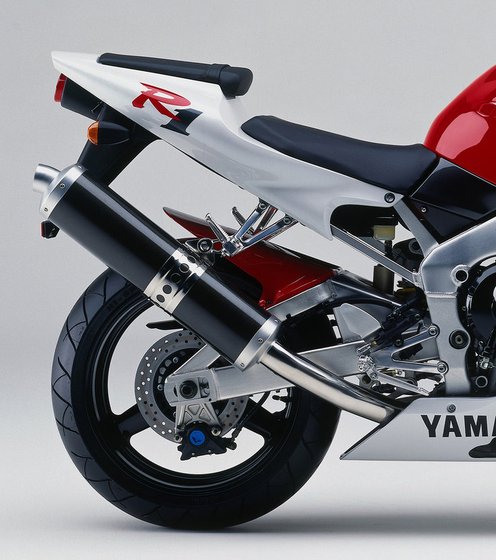
The 1998–2001 Yamaha YZF-R1 wasn’t just a motorcycle—it was a revelation. Its genius lay in making earth-shattering speed accessible, whether on a backroad or a racetrack. While modern bikes boast electronics and refinement, the R1 remains a pure, analog experience that rewards skill and passion.
For owners, MOTOPARTS.store offers the components to preserve its legacy. From NGK CR9E spark plugs to upgraded suspension kits, we’ve got your R1 covered. Because legends deserve to stay on the road—or the track—where they belong.
Ride hard. Ride smart. Keep the rubber side down.
— The MOTOPARTS.store Team



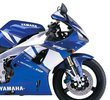




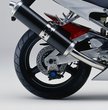
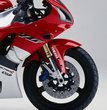


Specifications sheet
| Engine | |
|---|---|
| Stroke: | Four-stroke |
| Max power: | 110 kW | 148.0 hp |
| Max torque: | 108 Nm |
| Fuel system: | 4 x 40mm Mikuni CV carburetors |
| Max power @: | 10000 rpm |
| Displacement: | 998 ccm |
| Max torque @: | 8500 rpm |
| Bore x stroke: | 74.0 x 58.0 mm (2.9 x 2.3 in) |
| Configuration: | Inline |
| Cooling system: | Liquid |
| Compression ratio: | 11.8:1 |
| Number of cylinders: | 4 |
| Valves per cylinder: | 5 |
| Dimensions | |
|---|---|
| Wheelbase: | 1395 mm (54.9 in) |
| Dry weight: | 177 |
| Wet weight: | 192 |
| Seat height: | 820 mm (32.3 in) |
| Overall width: | 695 mm (27.4 in) |
| Overall height: | 1095 mm (43.1 in) |
| Overall length: | 2035 mm (80.1 in) |
| Ground clearance: | 140 mm (5.5 in) |
| Fuel tank capacity: | 18 L (4.8 US gal) |
| Drivetrain | |
|---|---|
| Final drive: | chain |
| Gear ratios: | 1st: 2.600, 2nd: 1.842, 3rd: 1.500, 4th: 1.333, 5th: 1.200, 6th: 1.115 |
| Chain length: | 114 |
| Transmission: | 6-speed |
| Rear sprocket: | 43 |
| Front sprocket: | 16 |
| Maintenance | |
|---|---|
| Rear tire: | 190/50-z-17 |
| Engine oil: | 10W40 |
| Front tire: | 120/70-z-17 |
| Brake fluid: | DOT 4 |
| Spark plugs: | NGK CR9E |
| Spark plug gap: | 0.7 |
| Coolant capacity: | 3.0 |
| Forks oil capacity: | 0.964 |
| Engine oil capacity: | 2.9 |
| Engine oil change interval: | Every 5000 km or 2 years, whichever comes first |
| Valve clearance (intake, cold): | 0.11–0.20 mm |
| Valve clearance check interval: | 24,000 km / 15,000 mi |
| Valve clearance (exhaust, cold): | 0.21–0.30 mm |
| Recommended tire pressure (rear): | 2.5 bar (36 psi) solo, 2.9 bar (41 psi) with passenger |
| Recommended tire pressure (front): | 2.5 bar (36 psi) |
| Chassis and Suspension | |
|---|---|
| Rake: | 24° |
| Frame: | Aluminium twin-spar |
| Trail: | 91 mm (3.6 in) |
| Rear brakes: | Single 256 mm disc, 2-piston caliper |
| Front brakes: | Dual 298 mm discs, 4-piston calipers |
| Rear suspension: | Truss-type aluminum swinging arm, Monocross system |
| Front suspension: | 41mm inverted telescopic forks |
| Rear wheel travel: | 130 mm (5.1 in) |
| Front wheel travel: | 135 mm (5.3 in) |



